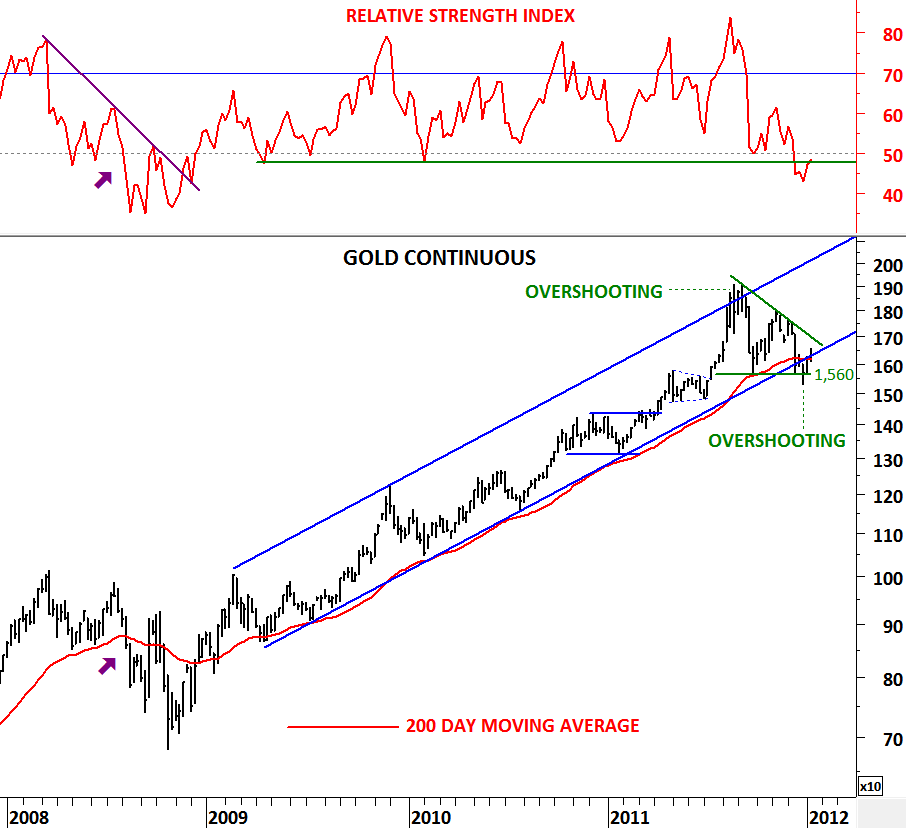GOLD Continuous
When I’m analyzing the long-term charts I try to combine 200 day moving average with the RSI. When combined they are helpful in giving you the big picture and the overall trend. Though there could be minor violations of the support/resistance areas, they will always generate timely warning signals in the intermediate/long-term.
RSI tends to move between 40 and 80 levels during a bull market. Other than signaling divergences, RSI helps us to define bull/bear market ranges. Likewise, the momentum indicator RSI moves between 60 and 20 levels during a bear market. When combined with the long-term moving average (200 day moving average) confirmation signal of a bull market is; price trending above its long-term moving average and preferably RSI holding above 50 levels.
Since the beginning of 2009, Gold has been moving higher in a clear parallel trend channel. During the uptrend price held above the 200 day moving average and RSI rebounded from the 50 level on every pullback of the price to the long-term moving average. While we were following the price trending above its long-term moving average we received confirmations from the RSI. In August 2011, price overshoot the trend channel at 1,850 and reversed immediately to test the lower boundary of the trend channel and the 200 day moving average. Meanwhile RSI weakened towards 50 levels. Similar price action occurred in mid-2008 where Gold fell below its 200 day moving average and RSI breached 50 levels warning us of a lengthy correction.
Gold is now at an important juncture to decide on either holding above the 200 day MA and RSI pushing back above 50 levels to resume its 3 year-long uptrend or establishing a lengthy corrective period below the 200 day moving average and RSI reaching to lower levels.
Horizontal support at $1,560 and short-term downtrend resistance at $1,700 are two critical support/resistance levels to watch in the next few weeks.




